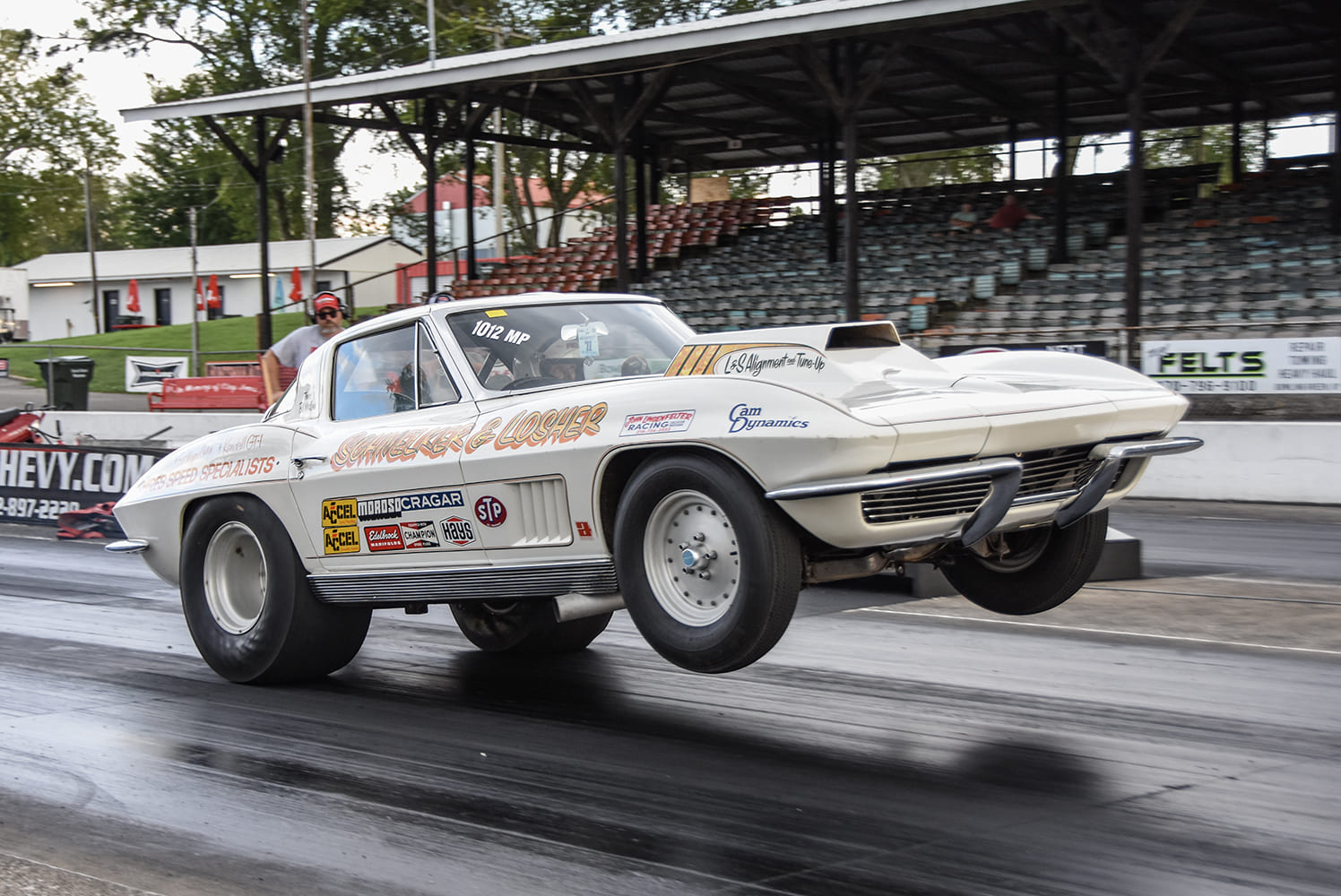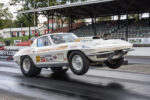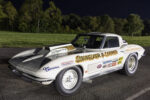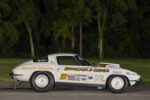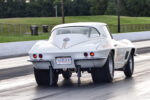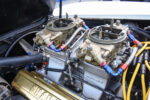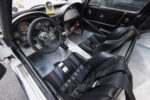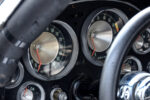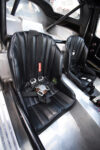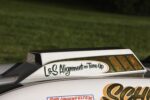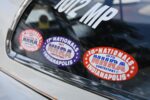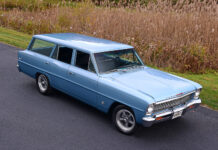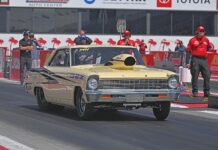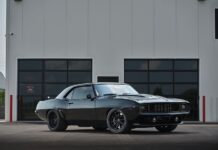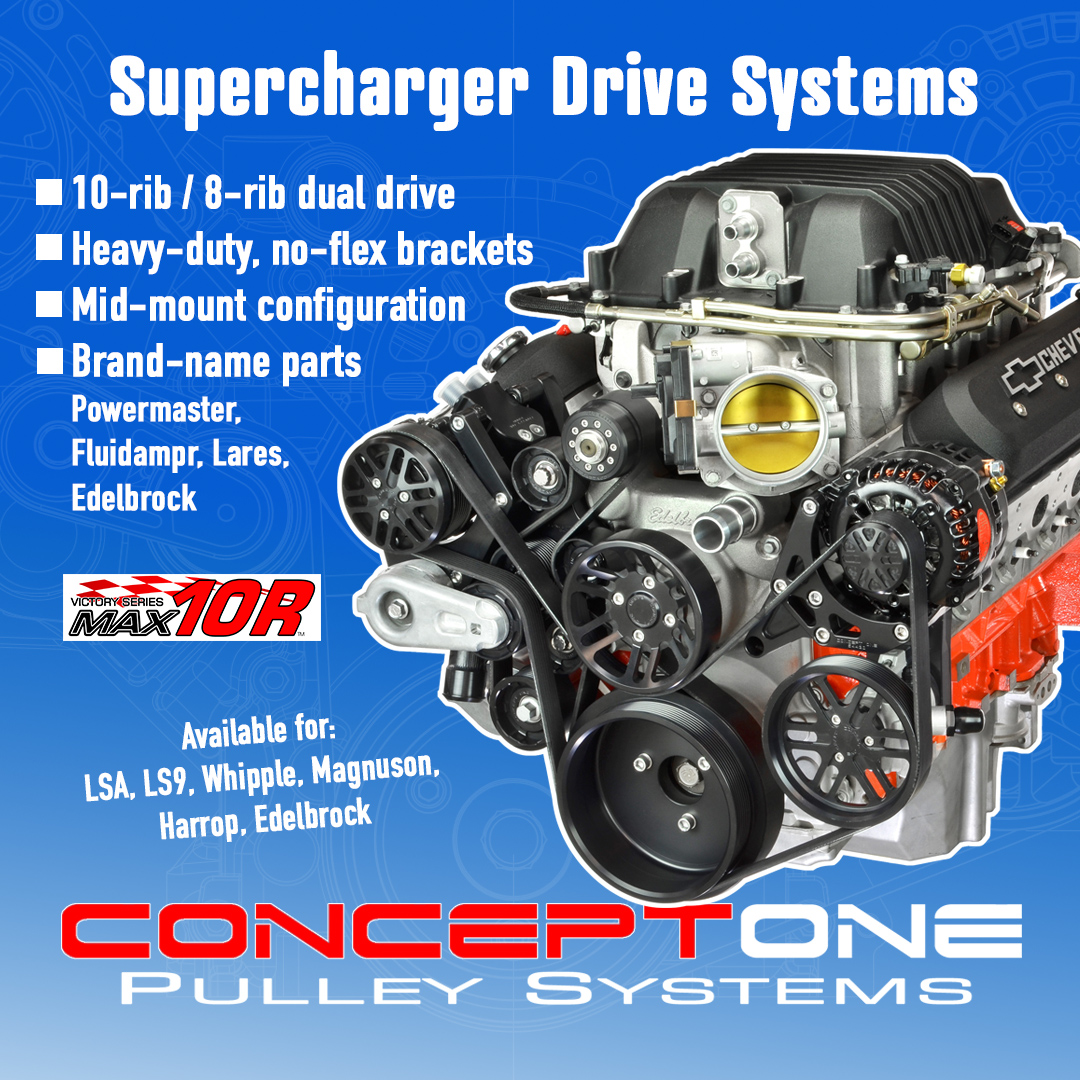Old drag cars always have a story to tell, but significant history is often covered up with a new paintjob or updated parts, losing special artifacts along the way. Because race cars are often a one-of-a-kind combination of parts, the simplest of changes can greatly alter a car’s pedigree. Occasionally, a car comes along that’s truly a time capsule that takes you back to another era. This is one of those cars.
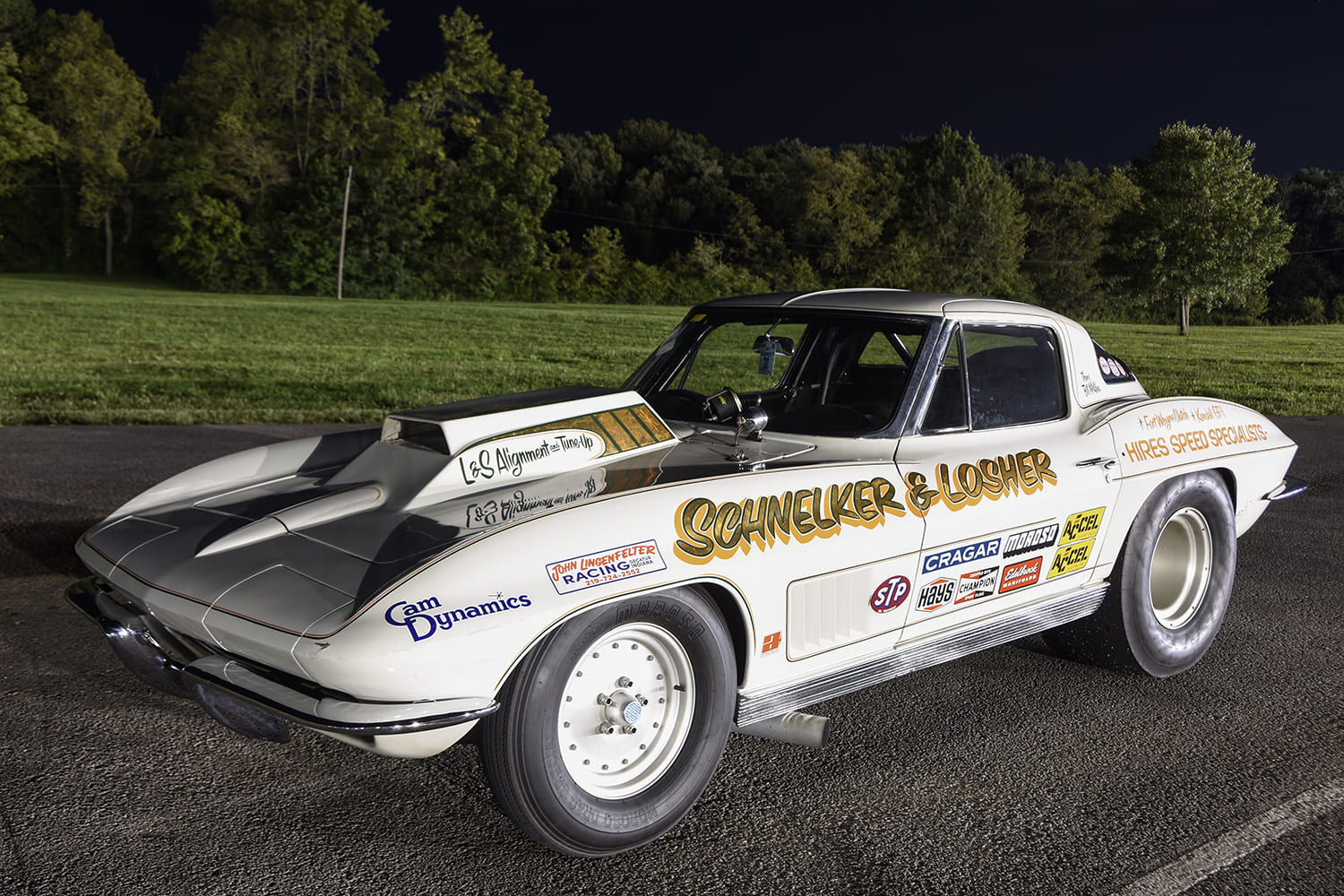
This is a 1963 Corvette Sting Ray, owned by Tom Clary of Alton, Missouri. Tom is no stranger to significant cars, as he’s been collecting Yenkos and old race cars for years. He is one of the partners of the Supercar Reunion event, a gathering of COPO, Yenko, Baldwin Motion, and many other rare muscle cars each summer in Bowling Green, Kentucky. That’s where we caught up with Tom and photographed his incredible Corvette drag car. Tom had a lot to say about the car’s history, as he had uncovered the full timeline of the car’s career on the dragstrip since purchasing it a few years ago. Not only did he document the car, but he carefully updated it so it could still make exhibition passes. It’s an outstanding piece of drag racing history, even though it was only raced for about six years before being retired and preserved for decades after. Despite its short-lived racing career, the car passed through several hands, including those of the legendary John Lingenfelter. Let’s dig into the history.
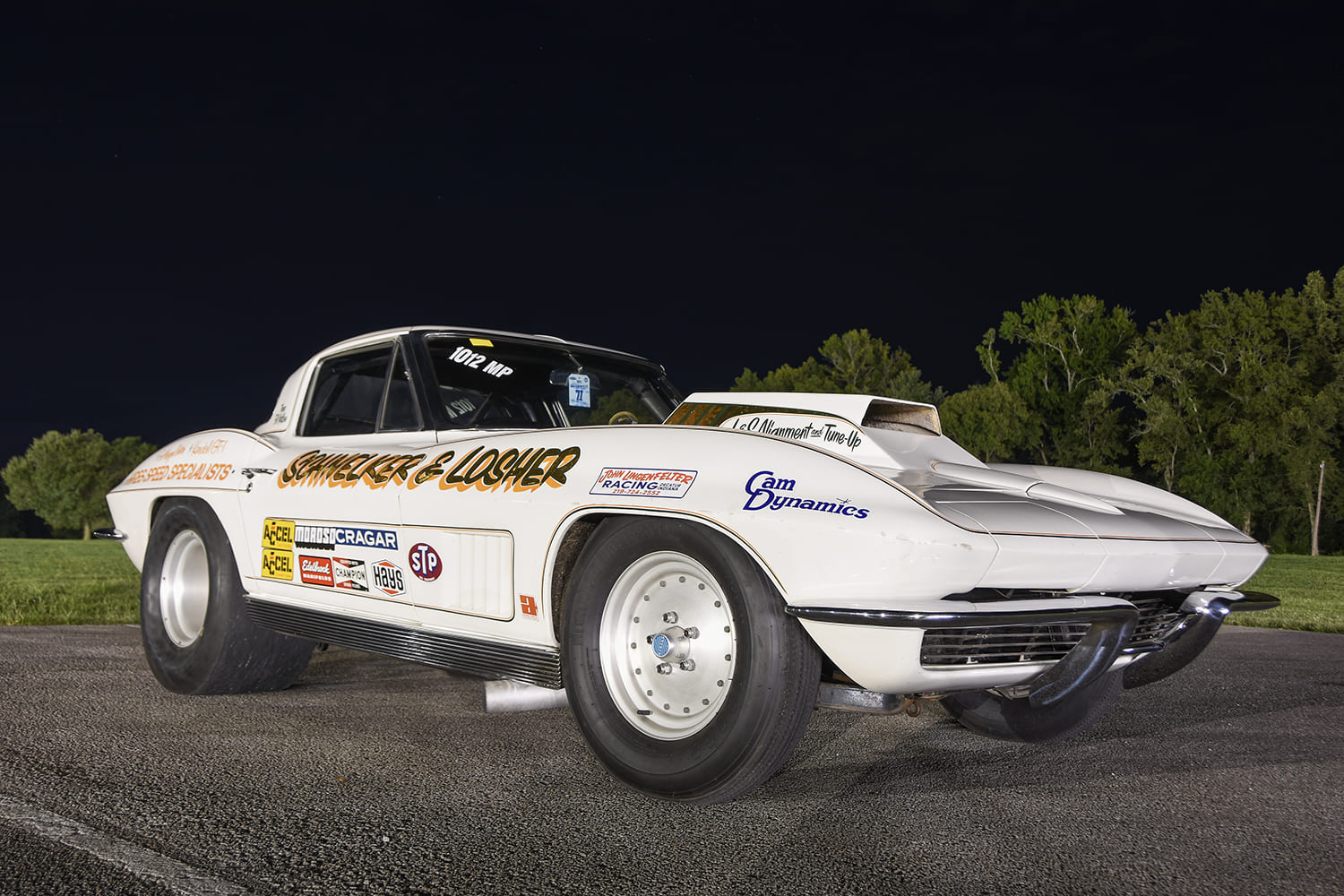
Going back to the mid 1960s, a couple of racing friends left their jobs at International Harvester in Decatur, Indiana, to open a machine shop called Performance Machine Service (PMS). Those friends were John Lingenfelter and Jerry Suetterlin. In 1969, Estele Townsend, a member of the PMS team, bought a wrecked 1963 Corvette split-window coupe, with intentions of building a drag car. He joined forces with Suetterlin, as Townsend provided the body, and Suetterlin provided a stout powerplant.
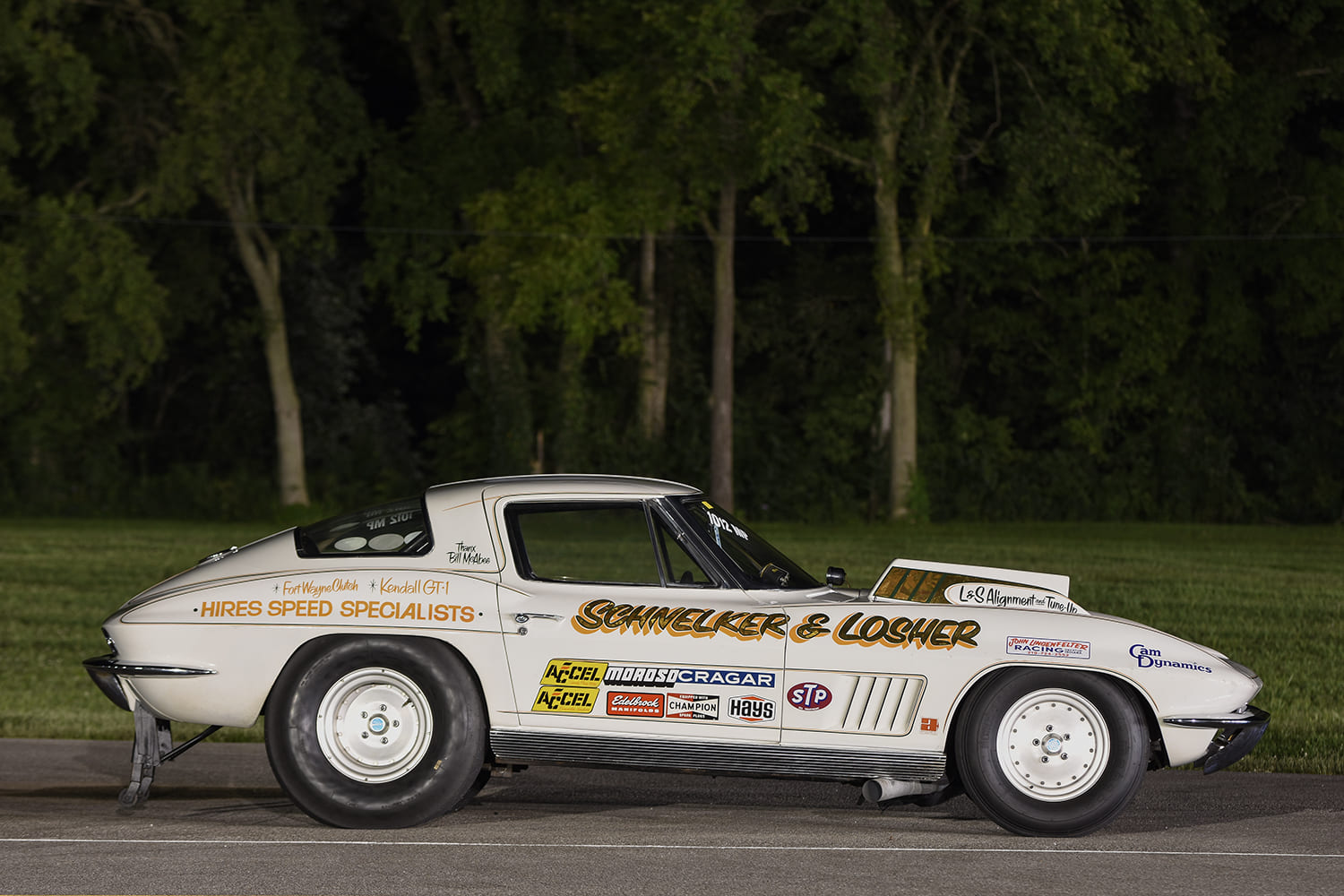
This original combination consisted of a 292ci small-block Chevy, which was a 0.060-over 283. It had some great tricks inside and featured Jere Stahl headers, a Muncie four-speed, and a Pontiac solid rear axle to replace the original independent rear suspension. The wrecked body was updated with a 1967 Corvette front end. The car was painted black and featured beautiful lettering with the PMS logo on the door, Suetterlin & Townsend on the front fenders, and D/MP on the quarter-panels. The D/MP designated the D category of the Modified Production class, a highly contested group of high-winding racers during drag racing’s glory days. The car made its debut in 1970 and ran 11.70s in the quarter-mile.
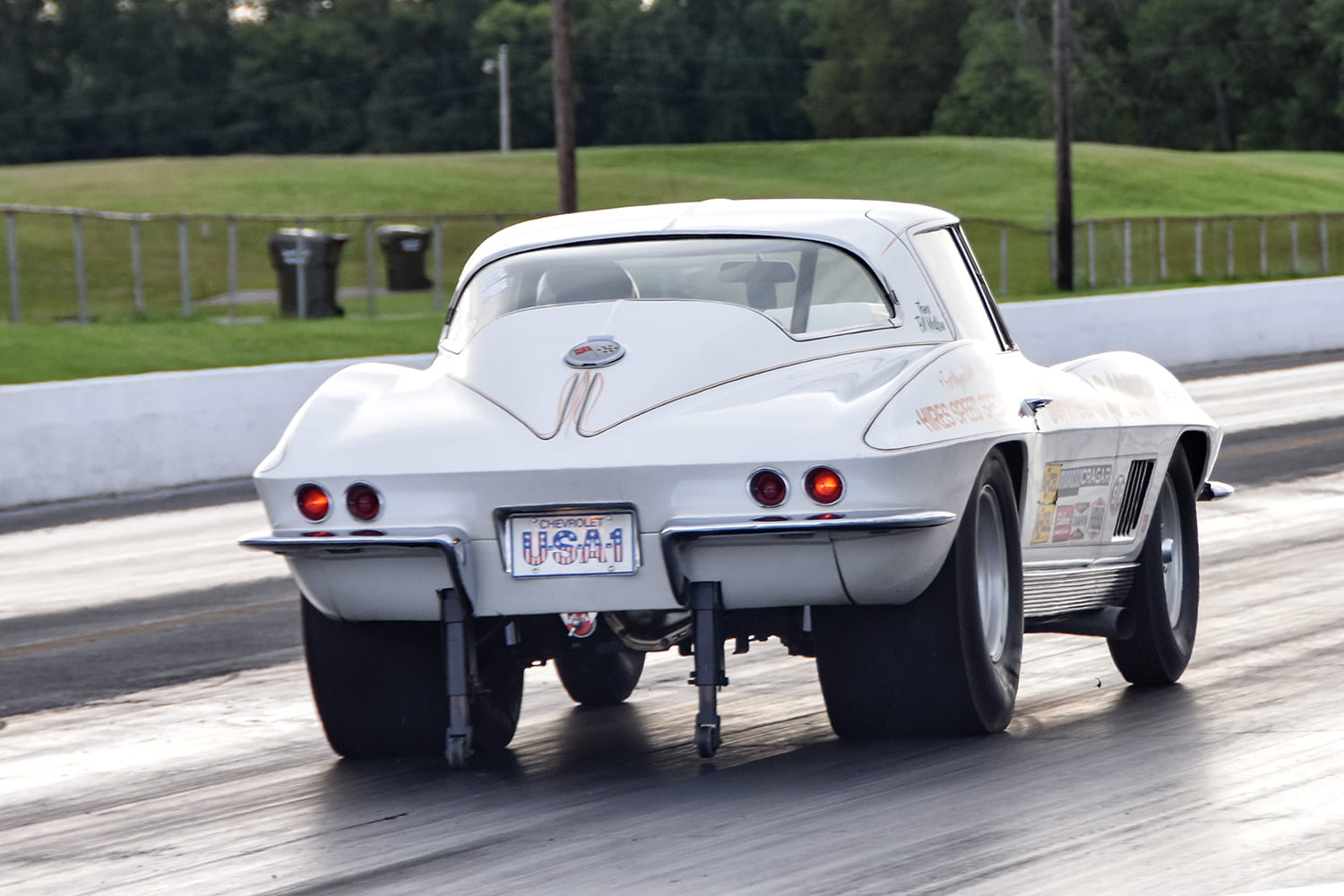
After only a few months, Townsend sold out of the arrangement, leaving Suetterlin with the sole responsibility of campaigning the car. Suetterlin raced the car in 1970 but then traded it for a green 1963 Corvette that John Lingenfelter had been racing. This took place in the summer of 1971, just before the U.S. Nationals. John and his brother Charles swapped the drivetrain out of the green Corvette into the black one. He also cut out the rear window divider, replacing the split rear windows with a solid back glass from a 1964-67 Corvette. A controversial topic these days, that was just race car stuff in 1971.
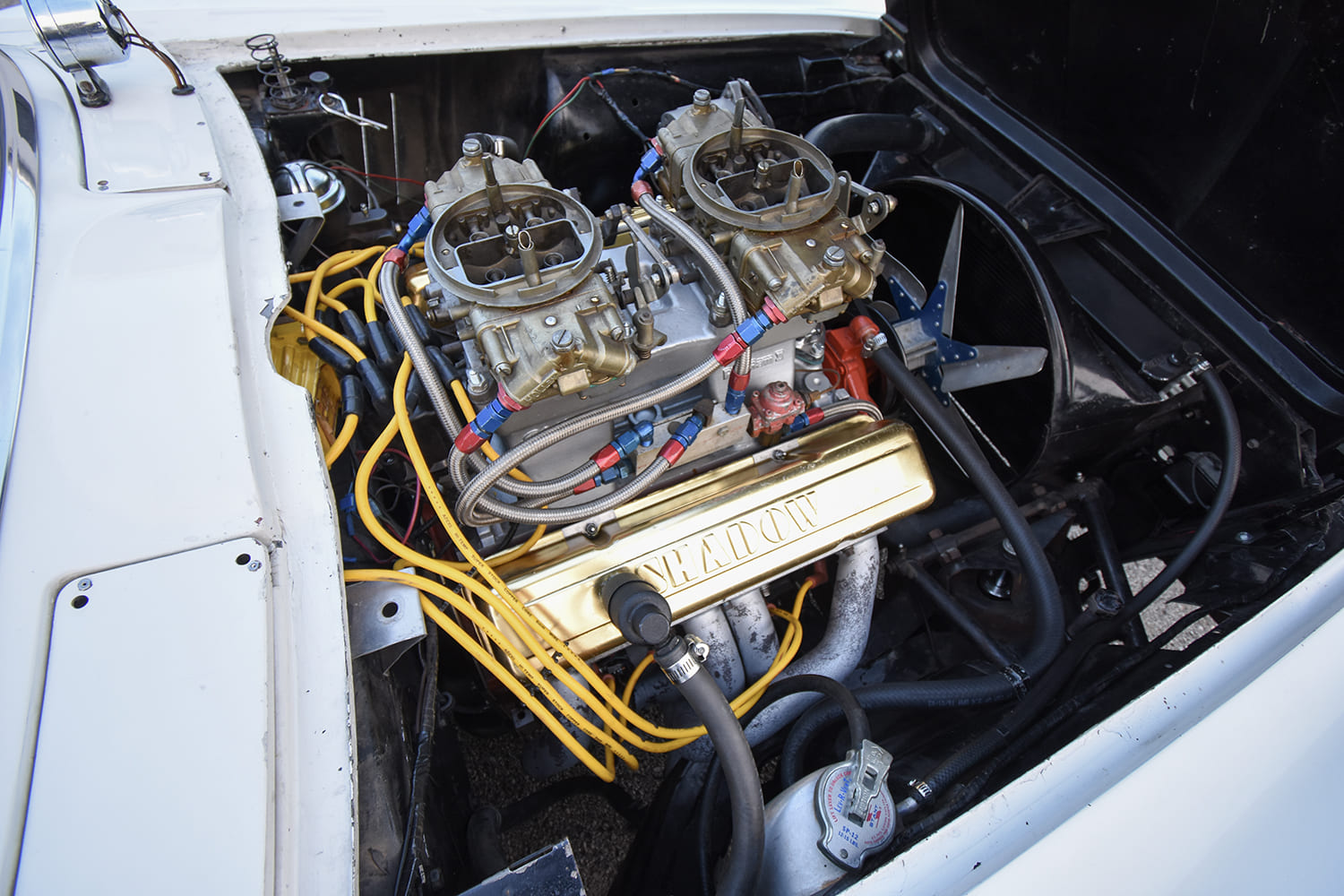
John’s engine combination was a de-stroked small-block Chevy that came in at only 255 ci, and once again had some special internal tricks. John and Charles had troubles at the U.S. Nationals and sold the car to John Schenlker and Rick Losher, owners of L&S Alignment in New Haven, Indiana. It was sold as a turnkey piece, still using the destroked small-block for power. Schenlker and Losher commissioned Jim Studinski at Advance Sign Company to hand-letter the car, which still shows very well to this day.
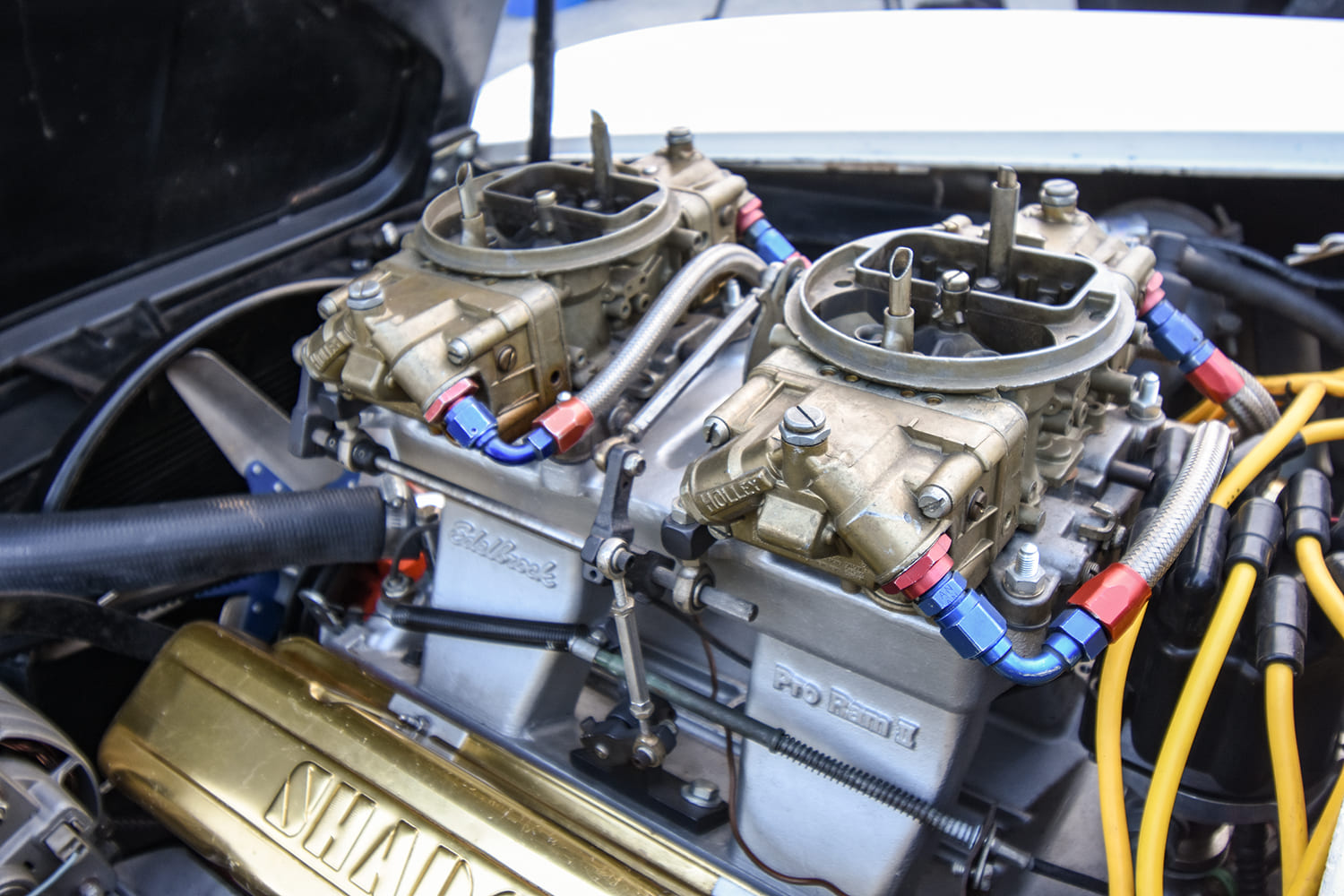
Schenlker and Losher ran the car at Indy, Muncie, and local tracks near Fort Wayne, Indiana. They most often ran the car on a 12.30 index, but the car was capable of mid 11s. After hurting the engine at Indy in 1972, a new Lingenfelter 302ci combination went into the car. During this time, the car was extensively rebuilt, transitioning into the narrowed Dana 60 rearend, a more extensive rollcage, and an all-aluminum interior. The Muncie four-speed was replaced with a Doug Nash five-speed and the heavy-duty square tube wheelie bars were fabricated to control the aggressive launch. In this configuration, the car moved into the Gas class, often falling into the E/Gas category. The 302ci small-block revved to the moon as it blazed through the quarter-mile with 6.17:1 gears in the Dana 60 rear.
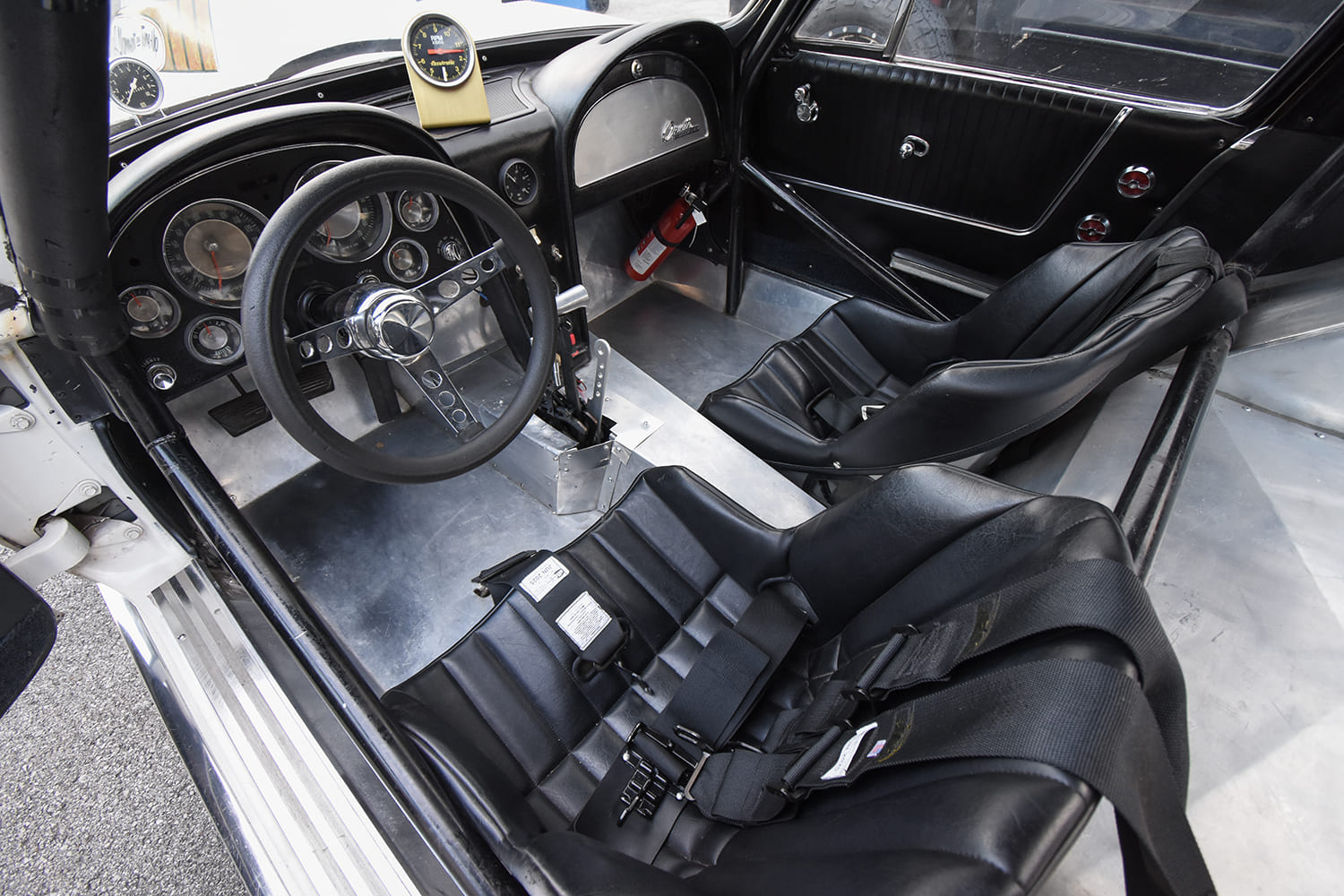
The car raced with this setup for a few years, but by 1976 it was parked. Luckily, it was stored indoor at L&S Alignment, unbothered for decades. The car sat there until 2019 when it changed hands a few times, eventually landing in Missouri with Tom Clary. The Clary family jumped on this project with intentions of putting it back on the track. The Lingenfelter 302 was pulled for historical purposes, and Tom installed a 355ci small-block engine, which is a back-up engine for a Yenko Nova drag car in the Clary stable. With Brodix heads and a big solid roller camshaft, the engine works well with the Edelbrock tunnel ram and dual Holley 660-cfm carburetors that were on the car with the Lingenfelter setup. Due to rpm limitations with the new 355 engine, Tom changed to 5.38:1 gears out back. He also swapped in a Ram clutch, a G-Force four-speed transmission, and Long inline shifter and went racing. The car yanks the front wheels effortlessly, and so far, the best e.t. to date has been a 10.330 e.t. at 131.31 mph.

The fascinating thing about this car is its preservation. The paint and lettering are showing a little age, but it’s in beautiful condition. As we sneak up on 50 years since this car was retired from serious racing action, it’s a miracle it didn’t end up on the market at some point in the ’80s or ’90s. It would’ve likely been restored back to original, as 1963 Corvettes carry such high values, but in our opinion, it would’ve ruined a killer race car.
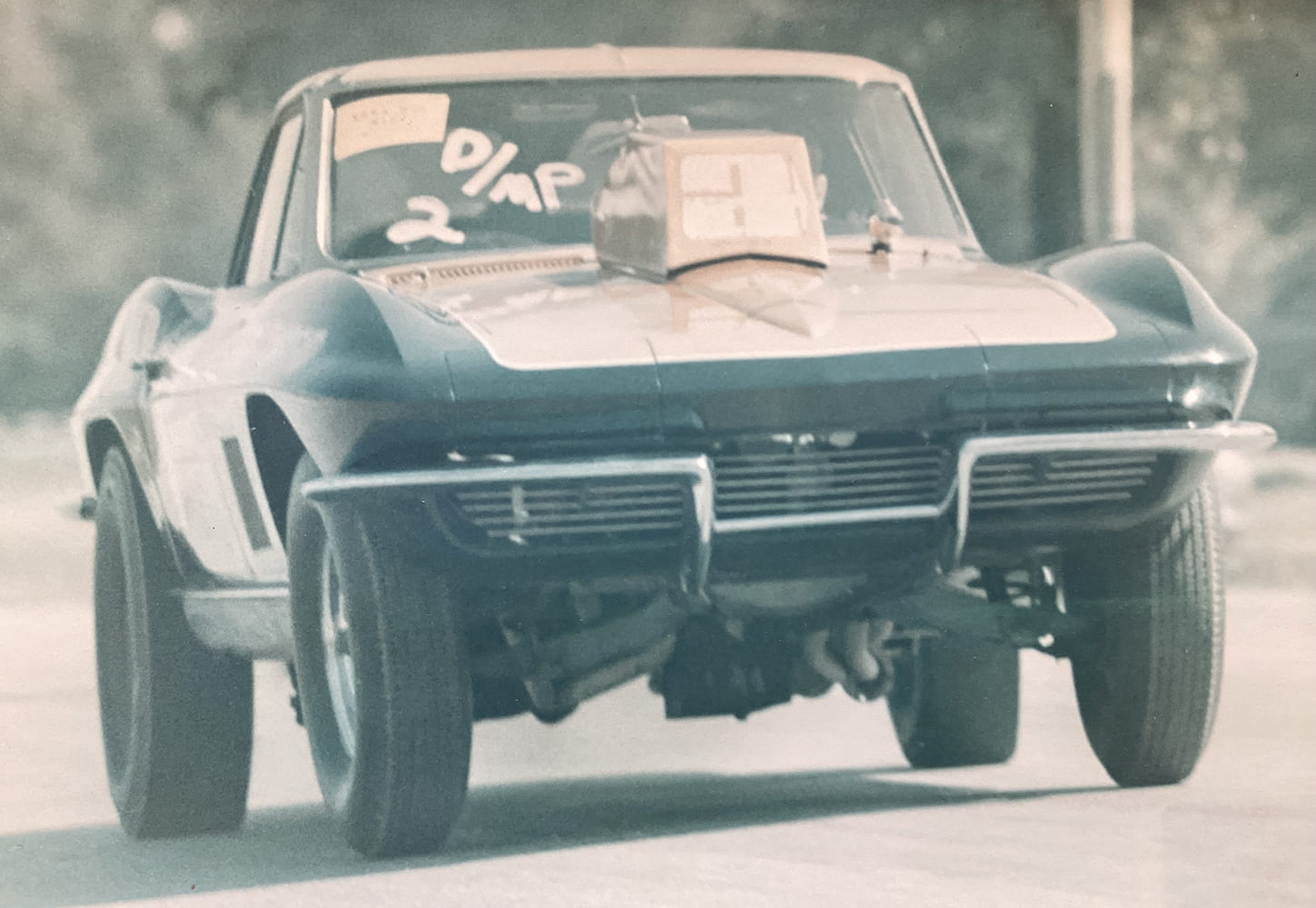
This car is an outstanding example of a true survivor, a car that not only made it all these years unscathed but also still functions. The car is a piece of drag racing history, and Tom says when he’s done playing on the dragstrip, he’ll put the historic Lingenfelter powerplant back in the car and make it 100 percent accurate to its 1976 configuration. For now, he’s having a blast ripping on this old-school stick shift Corvette and telling its story wherever he goes.
Check out this story in our digital edition here.
TECH CHECK
Owner: Tom Clary, Alton, Missouri
Vehicle: 1963 Corvette Drag Car
Engine
Type: Small-block
Displacement: 355 ci
Compression Ratio: 14.0:1
Bore: 4.030 inches
Stroke: 3.48 inches
Rotating Assembly: Forged
Cylinder Heads: Brodix
Valvetrain: Shaft-mounted rockers
Camshaft: Solid roller
Ignition: Accel
Induction: Edelbrock Pro Ram II intake, dual Holley 660-cfm carburetors
Exhaust: Stahl headers
Ancillaries: Gold anodized “Shadow” valve covers, flex fan
Drivetrain
Transmission: G-Force four-speed manual, Ram clutch
Rear Axle: Narrowed Dana 60 with 5.38 gears
Chassis
Front Suspension: Tubular control arms, QA1 shocks
Rear Suspension: Four-link, coil springs, and QA1 shocks
Brakes: Drums
Master Cylinder: Original-style single pot
Wheels & Tires
Wheels: Cragar Super Trick, 15×3.5 and 15×14
Tires: Moroso Drag Special 7.10-15 front and Goodyear 32.0×14.0-15 slicks
Interior
Seats: Aluminum racing seats
Steering: Stock column with three-spoke wheel
Console: Aluminum
Shifter: Long inline
Instrumentation: Stock with Acutronic 11,000-rpm tach
Wiring: Old
Exterior
Paint: Painted approximately 1971, lettered by Jim Studinski
Hood: Stock with Pro Stock hood scoop grafted on
Hood Hinges: Custom











